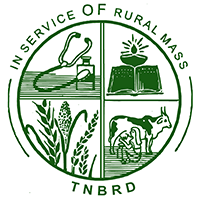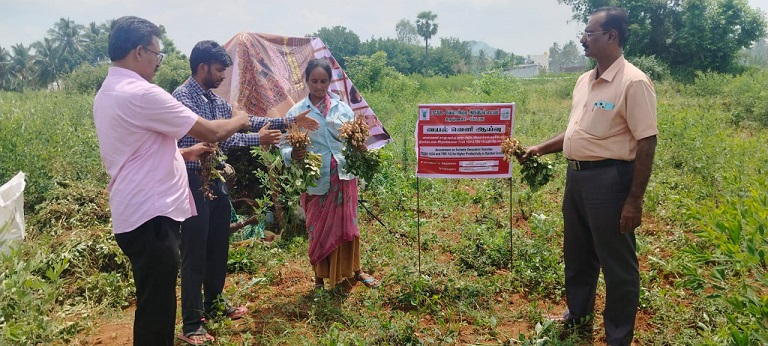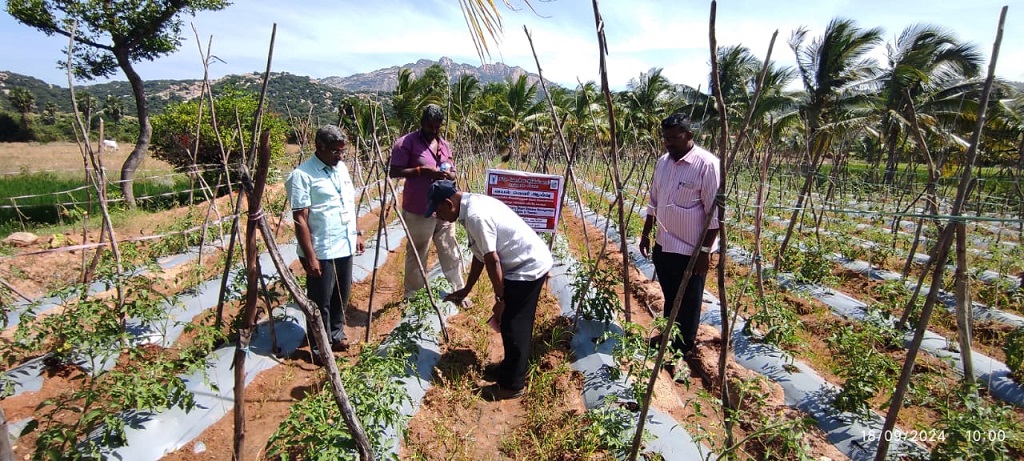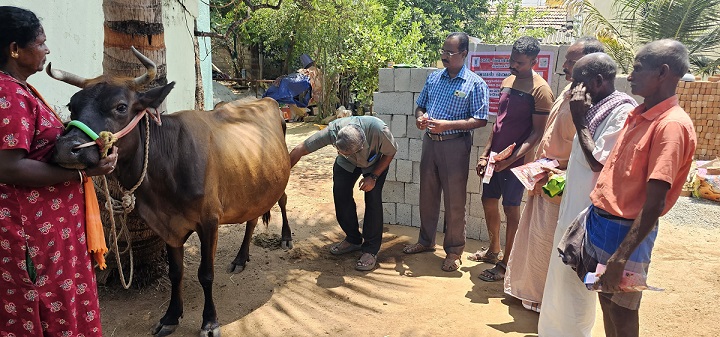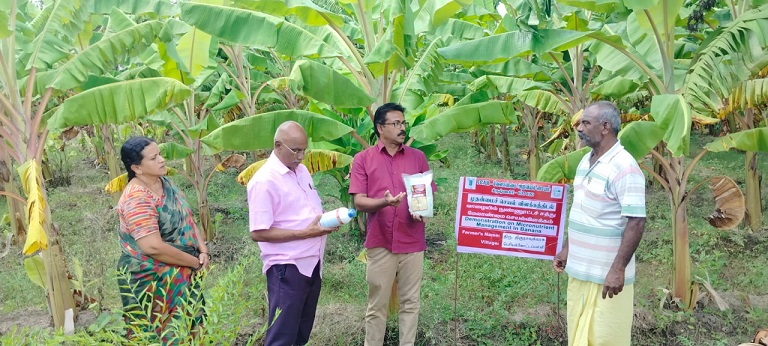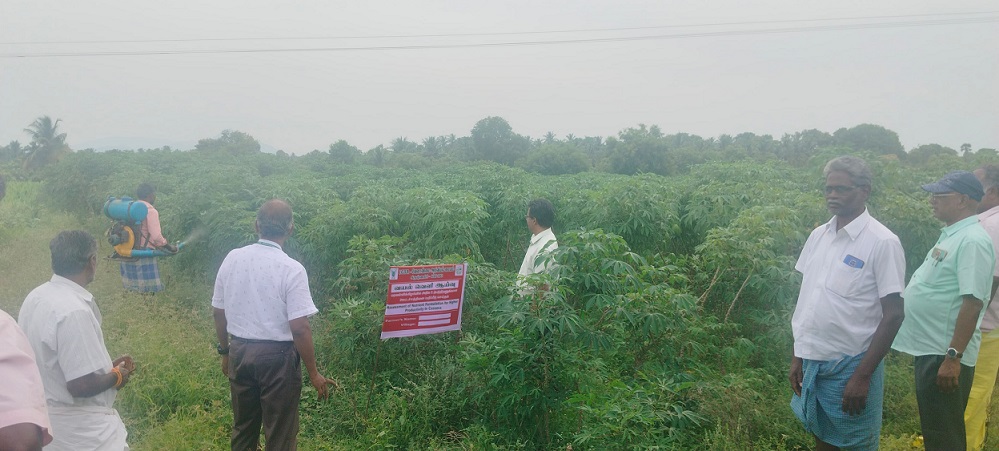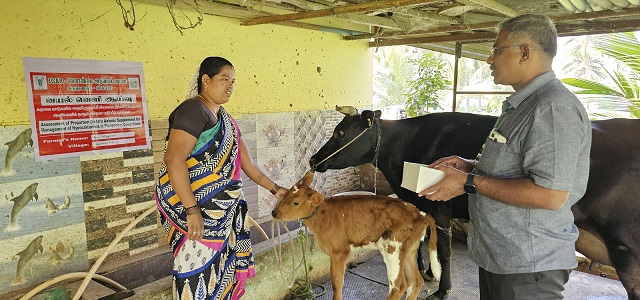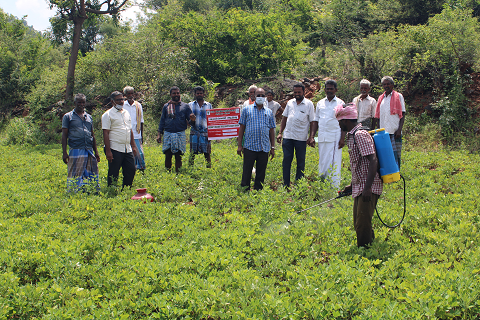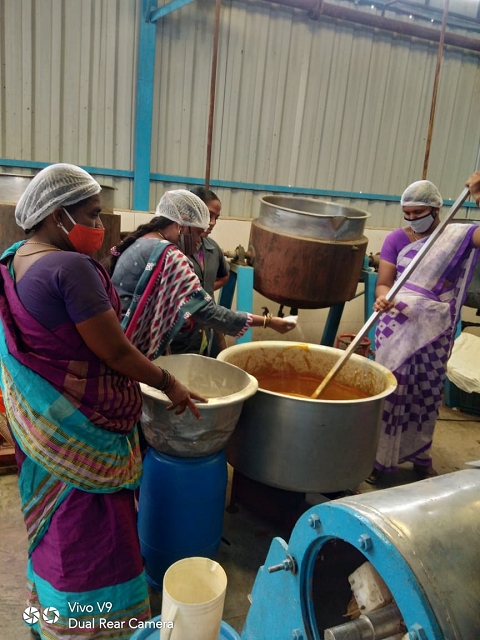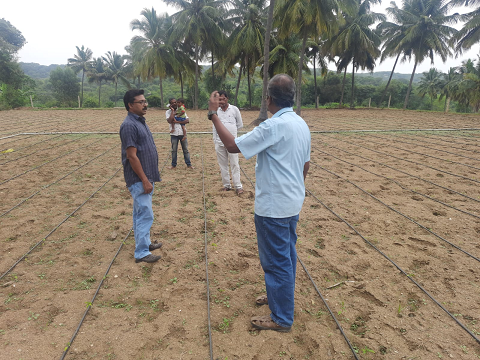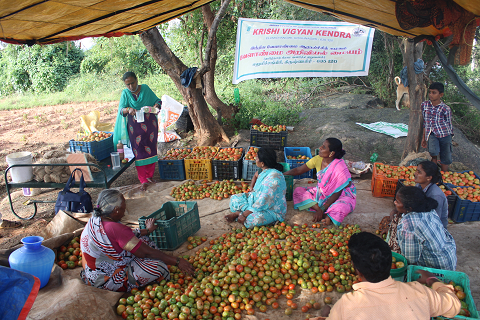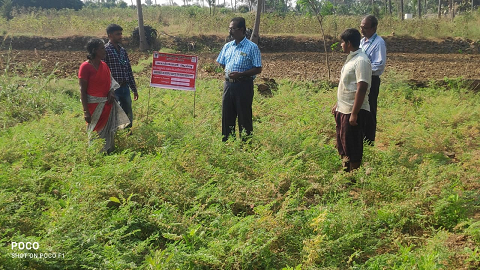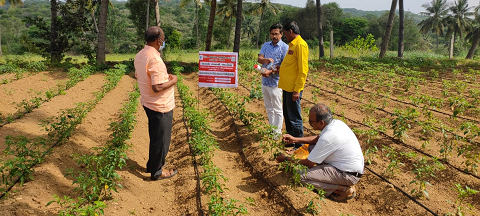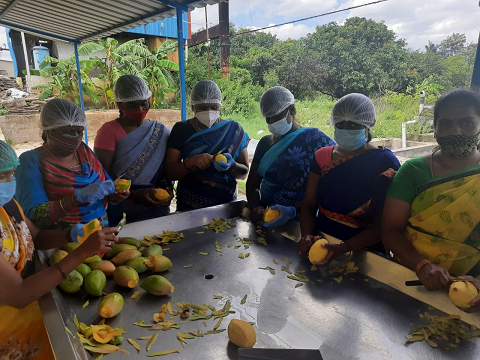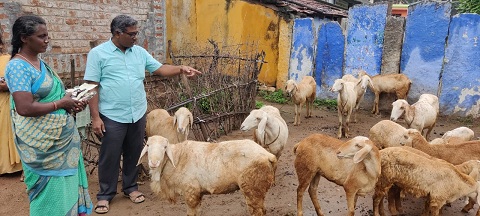On Farm Testing is to test and evaluate the research findings of Research Stations at the farmer's field and to refine and modify the technologies, if required for better adoption by farmers. It is confirmation of already proven research results under real farming situation. Based on the background information that the farmers do not adopt about 70% of the available technologies and hence it becomes necessary to take up farmer participatory testing of research findings in their own farms. Apart from convincing them it is also given an opportunity to refine or modify the recommendations to suite the requirements of the farmers in a given farming situation. Economically viable, operationally feasible technologies matching with farmers needs are identified to solve the problem faced by them.
The procedure of On-farm research has five steps viz.,
Diagnosis
Planning
Experimentation
Assessment / Evaluation of results
Recommendation and diffusion
There is, however, a considerable overlap and feedback among these five steps
Diagnosis
The diagnostic stage involves collecting and analyzing information in order to design On-farm experiments. In this steps, an understanding of farmers’ circumstances and practices are made in order to:
understand the farming system, and system interaction
identify possible productivity problems
begin to develop hypotheses on possible solutions
Planning
The planning on On-farm research is used to identify experimental factors to be included in on-farm experiments, as well as to suggest other research activities. There are six practical steps for research planning
Listing problems
Ranking problems
Identifying causes of problems
Diagram problems and causes
Listing possible solutions
Screening possible solutions for feasibility
Experimentation
On-farm experiments are conducted in the fields of representative farmers and to examine a small number of experimental variables. Those experiments may be described and classified in a number of ways, but regardless of classification most of them progress from exploring production problems, to testing possible solutions, and then to verifying recommendations and demonstrating them with farmers.
Assessment
The results of the on-farm experiments should be analyzed carefully. The analysis requires an assessment of farmers’ reactions and opinions. A thorough agronomic interpretation, and careful statistical and economic analysis will be helpful to this stage. The results of the assessment are then used to plan future research and to make recommendations for farmers.
Recommendation and Diffusion
When researchers are confident that they have enough information, they can formulate recommendations and non-recommendations can be released for demonstration on a larger area in the farmers’ fields.

